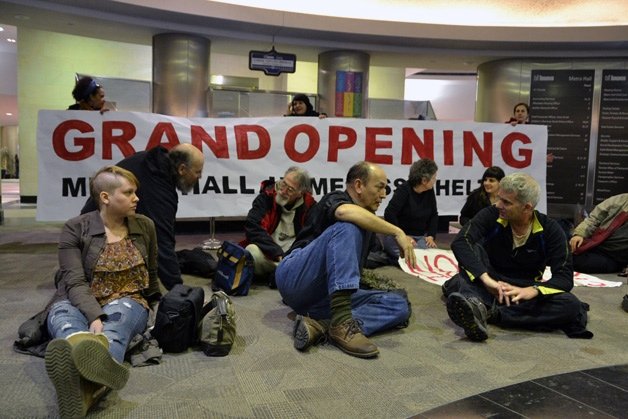
A city committee has voted to open up more temporary beds for the homeless, following months of debate about conditions in Toronto’s shelters.
At a meeting of the Community Development and Recreation Committee on Monday, councillors unanimously passed a motion that would direct the Shelter, Support and Housing administration to make 172 emergency beds available on a nightly basis, in addition its 3,836 permanent beds.
The committee also passed a slew of motions directing the administration to: undertake a third-party review of the system with input from shelter users track statistics on people turned away from shelters and conduct a review of housing and homelessness prevention initiatives. A motion to request that the city ombudsman examine the effectiveness of the shelter system was also approved.
All of the proposals need council approval, and will be considered at its meeting next month. The third party review could be completed by October, according to staff.
Councillor Joe Mihevc said that activating the 172 emergency beds was not an ideal solution, but it’s the best council can do in the short term.
“There’s nothing grand about it, but it is mats on the floor,” said Mihevc, who chairs vice-chair of the committee. “It recognizes that we do have a crisis, that we are over capacity, and we need to do something about it. It’s what we can do today.”
But anti-poverty activists argue that putting out emergency beds in existing facilities will do little to alleviate pressure on the shelter system.
“It will create more spaces, theoretically, that people can go to and not be turned away,” said John Clarke, of the Ontario Coalition Against Poverty. “But at the same time it will increase the level of overcrowding and tension and make the problem effectively worse.”
OCAP, which has occupied City Hall and Metro Hall in recent weeks to call attention to the plight of the homeless, wants council to open up new permanent shelters.
“A new facility must be opened. They can’t solve this problem just by throwing some mats down in existing shelters,” Clarke said.
The 172 emergency beds are located at 18 facilities across the city and can take the form of regular beds, cots, or merely mats placed on the floor, depending on the shelter.
At the moment, they’re reserved for cold weather alerts, but can also be activated whenever city staff deem it necessary. Statistics show that at least some of the emergency beds were utilized nearly every night in January and February.
Mihevc said he didn’t know how much it would cost to keep them open indefinitely, but that he would have figures before the proposal goes to council.
The state of Toronto’s shelter system has been the subject of heated debate at City Hall this year, with activists and front line shelter providers reporting that over-capacity facilities are being forced to turn the homeless away, even as city numbers show there are more than enough beds.
On Monday, for the first time since the current debate began, the man in charge of the shelter system publicly admitted that it might not be meeting demand.
Phillips Abrahams, acting general manager of the Shelter, Support and Housing Administration, told the committee that there were “two apparent truths” about the city’s homeless response.
On the one hand, he said, official statistics indicate ample bed space. “At the same time there are people who are persistently, and I would say very credibly, relating their experiences of their difficulties accessing the system,” he said.
“One of the things we are trying very hard to do is to reconcile those two truths.”
Noting that it was particularly hard to find spaces for homeless people who use wheelchairs or have pets, Abrahams said, “There is an enormous amount of pressure in the system, [and] we’re not always responding to those needs.”
A report the shelter administration released last week found that “there are beds available every night.” But it also noted that a majority of the “available” beds are not actually available to most homeless people because they are in facilities reserved for clients with special needs.
Because of this, the shelter system is effectively operating much closer to 100 per cent capacity than the official 96 per cent occupancy figure suggests, a shelter administration spokesperson has confirmed to NOW.
Some sectors are all but maxed out. Occupancy for single women’s shelters on a typical night in February was at 99 per cent, while beds for coed couples were 100 per cent full.












